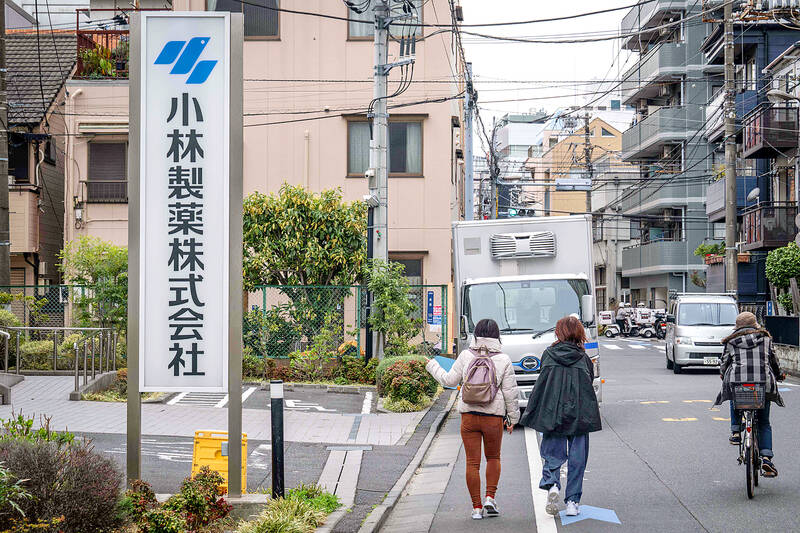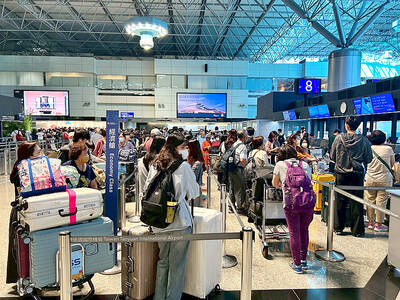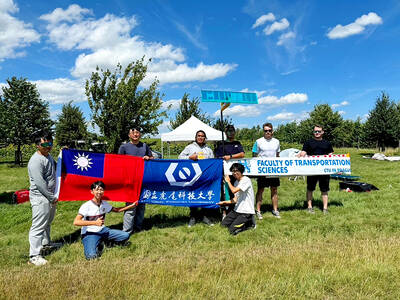The Japanese government’s confirmation that a toxic substance found in red yeast rice supplements produced by Kobayashi Pharmaceutical Co could cause kidney damage might help the supplement’s consumers in Taiwan if they seek compensation, the Food and Drug Administration (FDA) said on Wednesday.
The Japanese Ministry of Health, Labour and Welfare on Tuesday announced that toxic puberulic acid found in Kobayashi’s dietary supplements can cause renal tubular necrosis, citing animal experiments.
Officials from the ministry said they suspect that blue mold, which generates the acid, was accidentally mixed in during the cultivation of red yeast rice at the factory.

Photo: AFP
However, the acid’s effects on kidney function with repeated low dosages are yet to be determined, it said.
There have been a total of 64 reports of adverse reactions in people who consumed red yeast rice-related products from Kobayashi, according to the FDA.
FDA Deputy Director-General Lin Chin-fu (林金富) said that domestic complaints have all been transferred to consumer protection agencies for assistance.
With the Japanese ministry’s finding, if investigations point to legal liability on the part of Kobayashi, compensation claims would be easier to file, Lin said.
Taiwan is currently unable to test for puberulic acid due to a lack of specimens and testing methods, which Japan has not provided despite requests to do so, he said.
He said that related products in Taiwan were removed from shelves in late March.
According to the Japanese ministry, as of Monday, five people in Japan had died from consuming the supplements, with 281 others being hospitalized.
Asked about the matter, toxicologist Yen Tzung-Hai (顏宗海) via telephone said that little is medically known about the acid, including its acceptable daily intake, half-life and metabolic mechanisms.
However, he said that no puberulic acid should be detected during the standard fermentation process of red yeast rice products if standard operating procedures are followed.

The Chinese military has built landing bridge ships designed to expand its amphibious options for a potential assault on Taiwan, but their combat effectiveness is limited due to their high vulnerability, a defense expert said in an analysis published on Monday. Shen Ming-shih (沈明室), a research fellow at the Institute for National Defense and Security Research, said that the deployment of such vessels as part of the Chinese People’s Liberation Army (PLA) Navy’s East Sea Fleet signals a strong focus on Taiwan. However, the ships are highly vulnerable to precision strikes, which means they could be destroyed before they achieve their intended

About 4.2 million tourist arrivals were recorded in the first half of this year, a 10 percent increase from the same period last year, the Tourism Administration said yesterday. The growth continues to be consistent, with the fourth quarter of this year expected to be the peak in Taiwan, the agency said, adding that it plans to promote Taiwan overseas via partnerships and major events. From January to June, 9.14 million international departures were recorded from Taiwan, an 11 percent increase from the same period last year, with 3.3 million headed for Japan, 1.52 million for China and 832,962 to South Korea,

SOVEREIGNTY: The rigs show that Beijing ‘rejects Taiwan’s jurisdiction’ by building in areas where Taipei demands permission to build or alter installations Chinese oil rigs have been sighted just 26 nautical miles (42km), from Taiwan’s exclusive economic zone (EEZ) near Pratas Island (Dongsha Island, 東沙島), posing a threat to Taiwan’s sovereignty if left unchallenged, a brief published by the Jamestown Foundation on Tuesday said. Pratas Island, 444km from Kaohsiung, is northeast of the South China Sea and houses a Taiwanese garrison. The brief, titled “Rigging the Game: PRC Oil Structures Encroach on Taiwan’s Pratas Island” — referring to the People’s Republic of China — analyzed photographs and said that Beijing’s tools to pressure Taiwan now include oil rigs. “Oil rigs now constitute part of Beijing’s

The Taiwan Experience Education Program (TEEP) has funded short-term internships in Taiwan for more than 4,500 young people from more than 40 countries since 2015, with the goal of attracting and retaining international talent, the Ministry of Education said yesterday. Fifty-five colleges launched 514 projects this year, including in fields such as semiconductors, artificial intelligence, medicine and biotechnology, green energy, and sustainability, it said. The program provides research and practical internships in Taiwan for two to six months, and offers cultural exchange and networking opportunities, the ministry said. For example, National Formosa University’s Embedded System and Autopilot Laboratory developed two solar-powered drones in